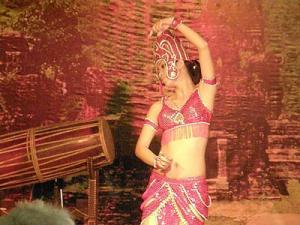Exploring Cham Culture

A two-day conference will be held in ${bigcity_Da_Nang:"Da Nang"} City today. The subject: the diverse aspects of the Cham-related multi-dimensional cultural exchanges between India and Vietnam.
The said conference is the first to be organized in Vietnam. It will explore the similarities and differences of Cham culture between the mentioned countries as well as map out a plan of union of the following. Moreover, the event will be a venue for sharing experiences in restoration, preservation and management of the World Heritage site My Son in the central province of Quang Nam, as well as several other world heritage sites in India and Southeast Asia.
In the conference, participants will each present papers on Cham sculptures and temples and share restoration and heritage management experiences from My Son and other world heritage sites in India.
In the 2nd to 19th centuries, the kingdoms of Champa in Central Vietnam left many relics and testimonies of their creativity. The Cham adopted the Sanskrit language and a system of writing derived from South Indian Pallava Grantha script. Many inscriptions written in the Sanskrit and in the Sanskrit-influenced Cham language were found along the Central Vietnamese coast.
The salvaged records show a high level of understanding of modern Indian civilization. It also shows proof of close trade, cultural ties and exchange of ideas between the Indian and Vietnamese coasts through Cham kingdoms, such civilization prospering one after the next. Cham brick temples and sculptures for instance are symbols of memorials that last through time and generations showing a strong cultural relationship between India and Vietnam. This led to Cham culture “refining,” defining their own culture of art traditions.
The government of India has recently granted US$3 million to Vietnam for the restoration and conservation of the UNESCO World Heritage Site of Cham Civilization at My Son. The project will be operated by the Archaeological Survey of India, the same organization responsible for the restoration of Angkor Wat and Ta Prohm in Cambodia and Wat Phu in Laos.
The restoration and conservation activity is one of the highlights of the Year of Friendship celebration between India and Vietnam. The said event will be participated in by the Embassy of India in ${bigcity_Hanoi:"Hanoi"}, the Indian Council for Cultural Relations and the Vietnam Institute for Culture and Arts Studies.









